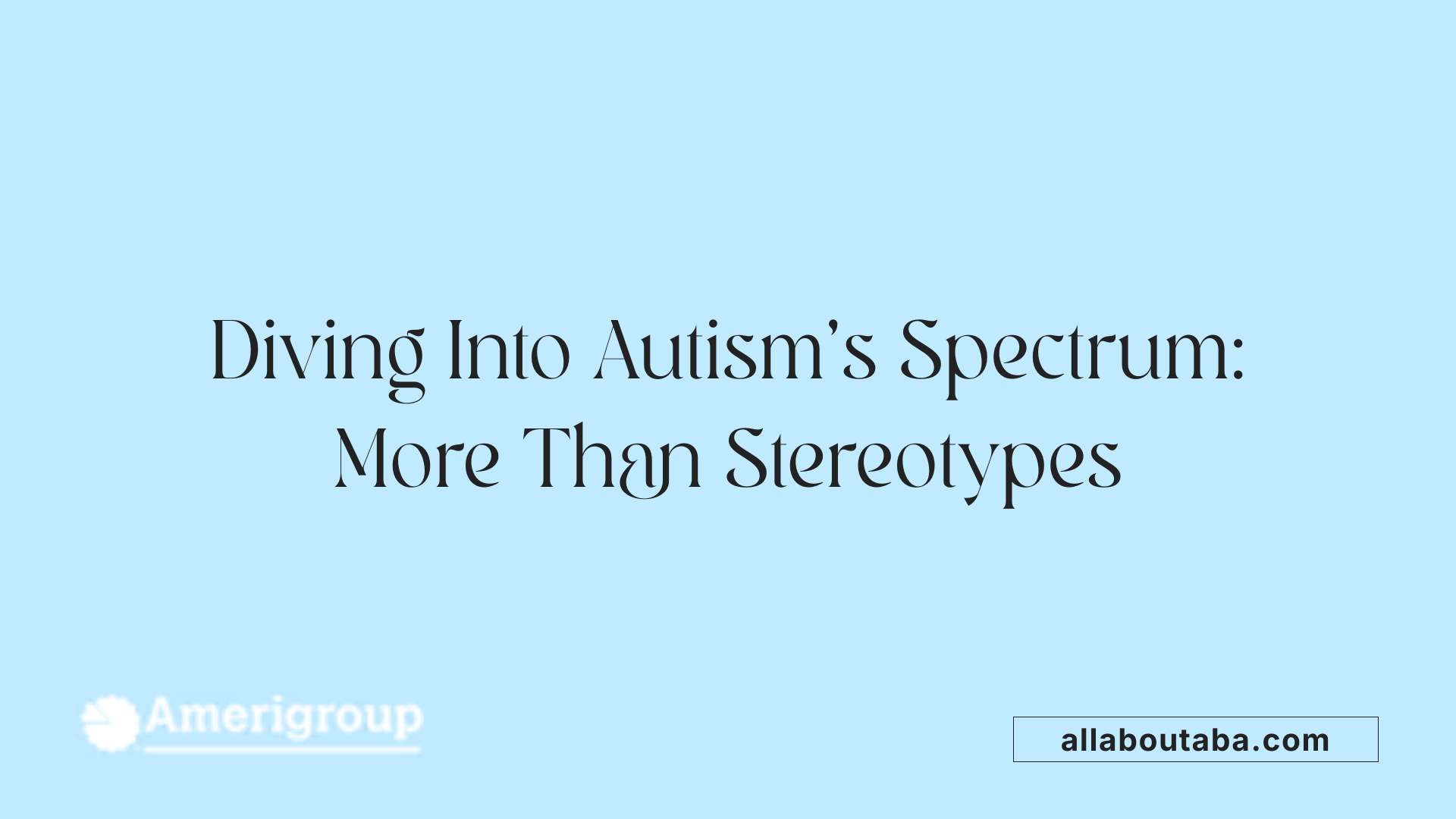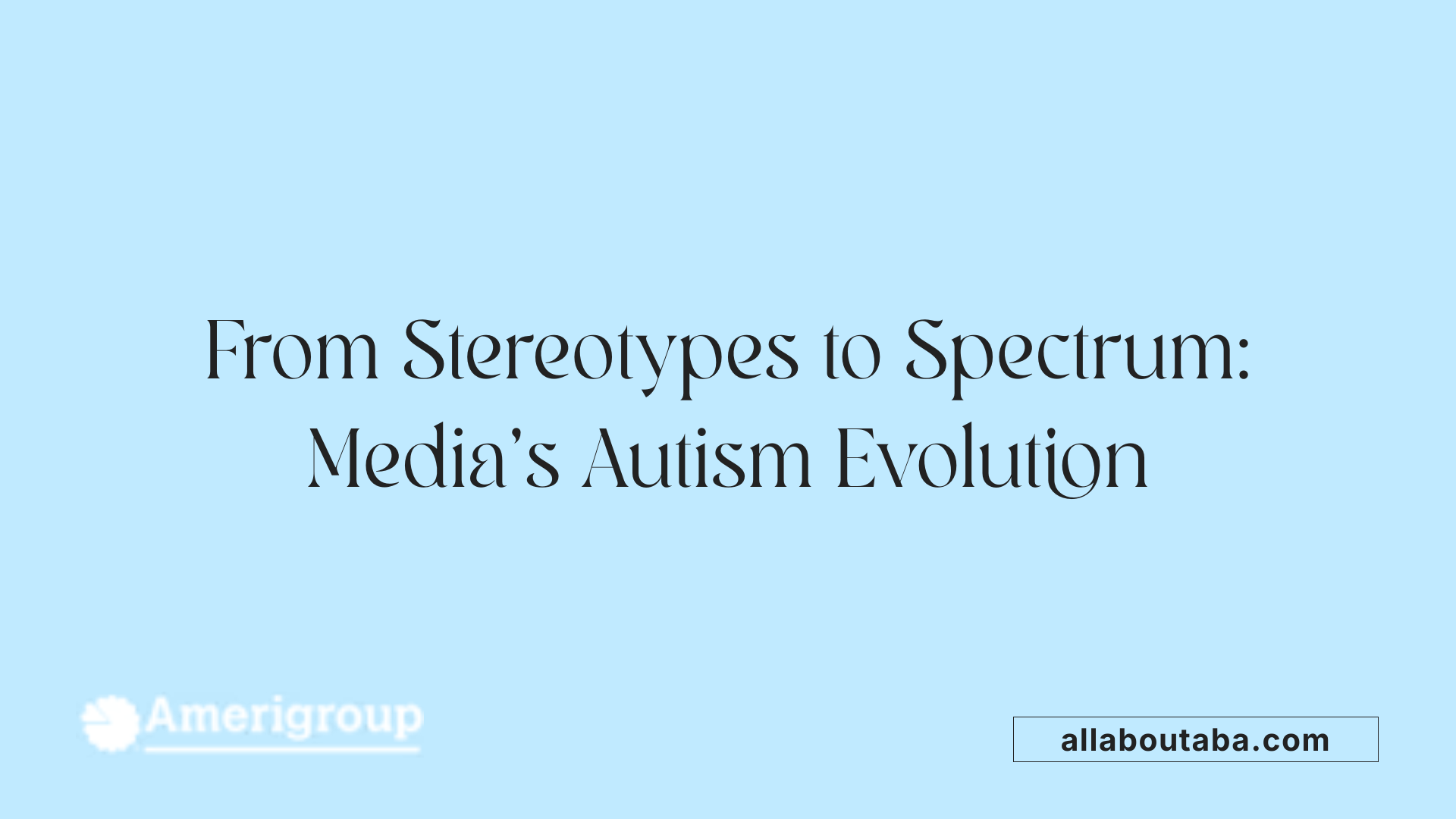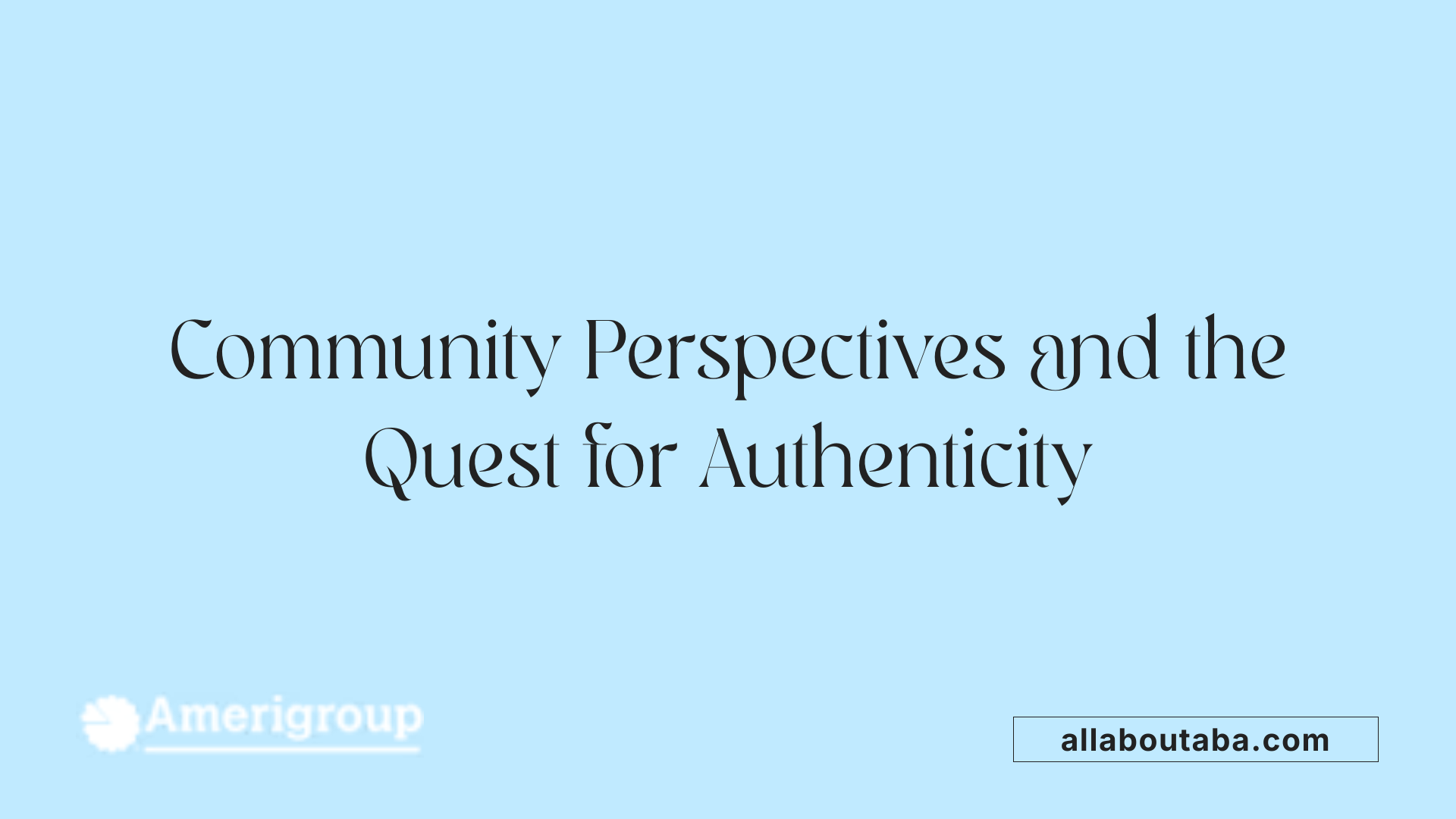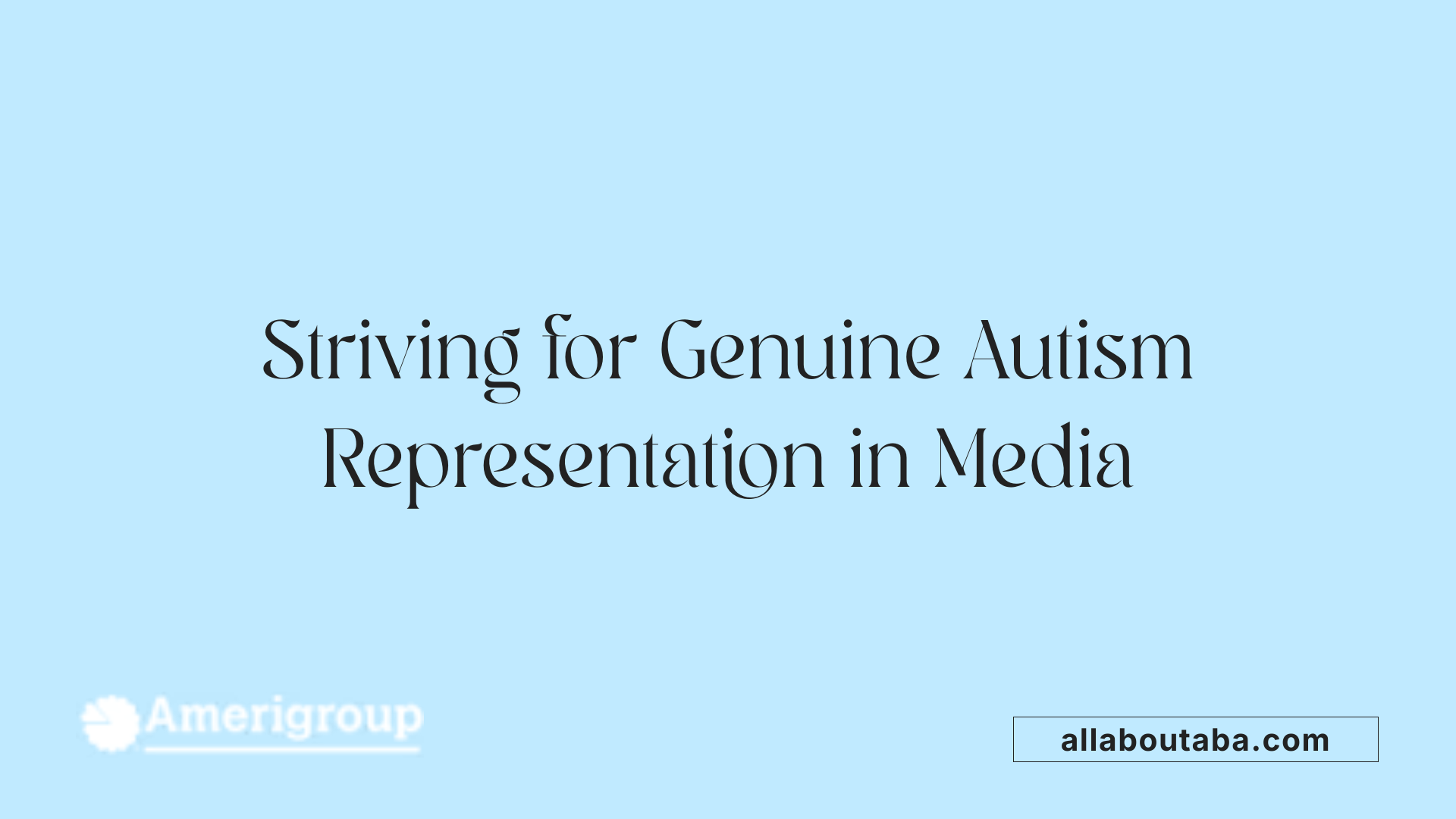Does The Good Doctor Have Autism?
Exploring Autism Through Fictional Eyes
The hit medical drama 'The Good Doctor' has sparked widespread discussion about the portrayal of autism in television. Central to this conversation is the character Shaun Murphy, whose depiction raises questions about authenticity, stereotypes, and the impact of media representation on public understanding of autism.
Shaun Murphy: A Character on the Autism Spectrum

Is Shaun Murphy from The Good Doctor portrayed as autistic?
Shaun Murphy, the protagonist of 'The Good Doctor,' is depicted as an individual on the autism spectrum. The character exhibits traits such as social awkwardness, difficulty maintaining eye contact, and repetitive behaviors like hand-flapping, which are common among many autistic individuals. The show portrays Shaun as a highly talented surgeon with savant syndrome, emphasizing his exceptional skills alongside his social and sensory challenges. While this portrayal aims to foster understanding and awareness of autism, some critics and advocates have pointed out that it leans on stereotypes and doesn't always reflect the full diversity of real autistic experiences. Nevertheless, Shaun Murphy remains a fictional but thoughtful representation designed to shed light on challenges and strengths associated with autism.
The Actor's Perspective and Research Efforts
Freddie Highmore, the actor renowned for his portrayal of Dr. Shaun Murphy in 'The Good Doctor,' invested significant effort into understanding autism to bring authenticity to his role. Despite not being on the autism spectrum himself, Highmore dedicated time to research, reading numerous books and consulting with autism experts to grasp the nuances of the condition.
Highmore's preparation involved exploring the sensory and social traits commonly associated with autism spectrum disorder (ASD). For example, he learned about sensory sensitivities, such as how environmental sounds can be distracting or overwhelming for individuals on the spectrum. He also studied social communication challenges, including difficulties recognizing facial cues and issues with social interaction, which are often featured in Murphy's character.
To ensure his portrayal was respectful and true to real experiences, Highmore collaborated with Melissa Reiner, an autism consultant with a Master’s Degree in Special Education. She provided guidance on depicting behaviors like social awkwardness, hand-stimulating activities during stressful moments, and the importance of routine. This partnership aimed to avoid caricatures and promote a more nuanced representation of autism.
Although Highmore does not have autism, his dedicated research influenced his acting, making Shaun Murphy a relatable and empathetic character. The show's creators also worked with autism experts to heighten authenticity while acknowledging the limitations of a fictionalized portrayal.
The series strives to highlight that autism is a spectrum with diverse presentations. By combining research, expert consultations, and sensitive storytelling, 'The Good Doctor' seeks to raise awareness and challenge stereotypes about autism. However, it is important to note that the show’s depiction relies on dramatization and does not fully encapsulate the vast diversity of real-life autism experiences.
In summary, Freddie Highmore's meticulous research and collaboration with professionals underscore the importance of actor preparation in portraying neurological conditions like autism with respect and accuracy. Such efforts help foster understanding and promote authentic representation in the media.
| Actor | Research Focus | Collaboration Partners | Representation Goals |
|---|---|---|---|
| Freddie Highmore | Autism traits, sensory sensitivities, social challenges | Melissa Reiner, autism experts | Authentic, respectful portrayal |
| Show creators | Autism spectrum diversity | Autism consultants | Educate and raise awareness |
| Real autism community | Personal experiences | Various advocates | Promote acceptance and understanding |
The Complexity and Diversity of Autism as Shown in the Series

Do the show discuss whether Shaun Murphy’s autism is based on real conditions?
The series 'The Good Doctor' portrays Shaun Murphy as a character with autism and savant syndrome, but it does not specifically state whether his autism is based on real medical or psychological conditions. While the character exhibits traits commonly associated with autism, such as social awkwardness, sensory sensitivities, and specific behavioral patterns, the show tends to dramatize and simplify these characteristics for narrative purposes.
Fictional media often highlight certain stereotypes or high-support needs, which can shape public perception of autism. However, these portrayals seldom delve into the medical intricacies or the full spectrum of autism's diversity. The series primarily aims to explore universal themes like competence, empathy, and acceptance rather than provide a detailed, accurate medical account of autism.
While Shaun’s traits reflect many recognized aspects of autism, especially Asperger’s Syndrome, the portrayal is somewhat idealized or exaggerated to serve storytelling and emotional impact. For viewers unfamiliar with autism, these depictions might foster understanding, but they can also reinforce stereotypes if not carefully nuanced.
In reality, autism is extremely varied, affecting individuals differently across a broad spectrum. The show does not explicitly clarify this complexity, which is why some critics argue that such portrayals, while helpful in raising awareness, might oversimplify or distort certain aspects of real autism. Nevertheless, the series uses Shaun’s character as a tool to depict themes like overcoming social barriers and embracing diversity.
Overall, 'The Good Doctor' does not explicitly confirm whether Shaun Murphy’s autism reflects specific real-world conditions. Instead, it presents a fictionalized yet somewhat representative depiction, designed to evoke empathy and challenge misconceptions about autism in popular culture.
The Progression and Evolution of Autism Representation in Media

Initial stereotypical portrayals
Historically, media portrayals of autism were often limited to stereotypes that exaggerated certain traits, such as social awkwardness, inability to communicate, or savant talents. These portrayals frequently failed to reflect the full diversity and complexity of individuals on the autism spectrum. Characters depicted with autism were sometimes caricatured as eccentric or quirky, reinforcing misconceptions rather than fostering understanding.
Introduction of autistic actors and nuanced characters
In recent years, there has been a shift towards more authentic and respectful portrayals of autistic characters. A significant breakthrough was the casting of autistic actor Kayla Cromer in the TV show Indigo, inspired by the character Shaun from The Good Doctor. This move not only provided representation but also encouraged stories crafted with greater sensitivity.
The character Dr. Shaun Murphy in The Good Doctor marked an important step, being a character with autism and savant syndrome. While Freddie Highmore, who plays Shaun, does not have autism, he extensively researched the condition, consulting with experts and autism consultants. This effort aimed to portray Shaun’s traits—such as social challenges, sensory sensitivities, and visual thinking—in a way that aligns with real experiences. TV shows began increasingly to depict specific autism-related behaviors like difficulty recognizing facial cues, adherence to routines, and heightened perception, which helped foster better understanding.
Ongoing efforts for realistic depictions
Despite strides toward accuracy, some critics argue that shows like The Good Doctor sometimes rely on stereotypes or exaggerated traits that do not encompass the diversity within the autism spectrum. For instance, Shaun’s social misunderstandings and sensory sensitivities are portrayed with a degree of generalization, which can oversimplify the range of experiences that autistic individuals may have.
Nonetheless, many productions now consult autism experts and individuals on the spectrum to craft more nuanced characters. Melissa Reiner, an autism consultant involved in The Good Doctor, emphasizes that respecting the individuality of autistic people is paramount. Such collaborations have led to portrayals that consider how people with autism walk, talk, and regulate themselves, making the characters more relatable and authentic.
Future prospects for credible autism characters
Looking ahead, the future of autism representation on television appears promising. Newer shows like Heartbreak High, A Kind of Spark, and Dinosaur are shining examples of narratives that focus on authentic, diverse experiences of autistic characters. These series aim to avoid stereotypes and instead showcase characters with multidimensional personalities, interests, and challenges.
The goal is to create portrayals that respect neurodiversity, promote inclusion, and challenge misconceptions. The entertainment industry recognizes the importance of featuring autistic actors and consulting with experts to ensure accurate depictions. These efforts contribute to a broader understanding, acceptance, and appreciation of autism as part of human diversity.
| Aspect | Historical Trends | Recent Developments | Future Directions | Benefits |
|---|---|---|---|---|
| Portrayal Scope | Stereotypes, caricatures | Nuanced, varied characters | Authentic, diverse stories | Better understanding and acceptance |
| Representation | Mostly neurotypical actors | Increasing autistic actors | More inclusive casting | Increased visibility and diversity |
| Cultural Impact | Reinforced misconceptions | Challenged stereotypes | Promoting neurodiversity | Reducing stigma and fostering respect |
Public Reception and the Push for Accurate Representation

Critiques from the autistic community
While 'The Good Doctor' has played a significant role in raising awareness about autism, it has faced criticism from parts of the autistic community. Some viewers and advocates argue that the show often relies on stereotypical portrayals of autism, portraying traits such as social awkwardness and sensory sensitivities in exaggerated or simplified ways. These portrayals can reinforce misconceptions rather than foster a nuanced understanding of autism spectrum disorder (ASD). Additionally, some autistic individuals feel that the character of Shaun Murphy, although inspiring, does not fully capture the diversity and complexity of real-life autistic experiences.
The role of autism consultants in the show
To enhance authenticity, the show's creators brought in autism consultants, including Melissa Reiner, who has a Master’s Degree in Special Education and extensive experience working with autistic individuals. These experts advised on how Shaun walks, talks, and regulates himself, ensuring actions reflected real autism experiences. Autism consultants also supported the show's writers in designing dialogues and behaviors, such as Shaun’s preference for declarative sentences over questions, which reflects how many autistic people communicate best.
Tamlyn Tomita, a cast member, emphasized that consultation was crucial in making the characters and behaviors believable and respectful. The use of consultant feedback aimed to avoid caricatures and stereotypical behavior patterns, striving instead for depiction rooted in reality. Nevertheless, critics argue that despite these efforts, some portrayals still fall into familiar tropes and miss opportunities to showcase the diversity of autism.
Impact of the portrayal on awareness and stereotypes
'The Good Doctor' has undeniably contributed to greater awareness of autism, encouraging viewers to consider the challenges faced by autistic individuals in social and professional settings. Its portrayal of Shaun Murphy's determination and skill challenges the misconception that autism limits success.
However, the series has also been criticized for unintentional reinforcement of stereotypes. For example, Shaun’s behaviors sometimes seem exaggerated or highlighted as peculiar, potentially fostering a narrow view of what autism looks like. Moreover, the show's depiction of Shaun’s social misunderstandings and sensory issues may oversimplify or dramatize autism traits, which can reinforce stereotypes rather than dispel them.
Despite these pitfalls, the series has sparked important conversations about neurodiversity and acceptance. It has prompted viewers to look beyond surface traits and consider the talents, aspirations, and individuality of autistic people.
Examples of better representation in recent media
Encouragingly, recent media features more authentic and diverse representations of autism. Shows like A Kind of Spark, which stars autistic actress Olivia Crociani and depicts autism more naturally, and Heartbreak High, which includes characters with autism portrayed by genuine autistic actors, are gaining recognition. These productions prioritize inclusive storytelling, authentic dialogue, and respectful portrayals.
Additionally, Dinosaur, an upcoming series featuring autistic characters portrayed by autistic actors, aims to push beyond stereotypes by focusing on nuanced personal stories. Such examples signal a progressive move toward more accurate and respectful depictions of neurodiverse individuals, reflecting the growing advocacy for authentic autistic representation.
| Aspect | 'The Good Doctor' | Recent Media Examples | Details |
|---|---|---|---|
| Autism portrayal | Based on autism traits but criticized | More authentic, diverse portrayals | Focus on individual stories, avoiding stereotypes |
| Use of actors | Freddie Highmore (non-autistic) | Autistic actors like Olivia Crociani | Advocates for neurodiverse casting and representation |
| Consulting | Melissa Reiner and autism professionals | Similar consulting in other shows | Consultations enhance authenticity, though impact varies |
| Audience impact | Raises awareness, but with stereotypes | More nuanced understanding | Promotes acceptance and understanding |
Overall, while 'The Good Doctor' has played a pivotal role in autism awareness, ongoing efforts are essential to improve representation. Emphasizing authentic characters, diverse portrayals, and consulting with the autism community can help media better serve as a tool for education and acceptance.
Conclusion: Balancing Entertainment with Authenticity

Achievements in autism awareness through the show
'The Good Doctor' has played a significant role in increasing public understanding of autism. By featuring Shaun Murphy as a protagonist with Asperger's Syndrome and savant syndrome, the show has introduced many viewers to the traits and experiences associated with autism. Its deliberate inclusion of characteristics like sensory sensitivities, social challenges, and visual thinking has helped demystify some aspects of autistic lives. The series has also influenced conversations about employment and social integration, emphasizing that autism does not limit individual potential.
Moreover, bringing on an autistic actor, Kayla Cromer, to portray a character inspired by Shaun marked a positive step towards authentic representation. Although not perfect, these efforts have raised awareness and challenged stereotypes, fostering a more inclusive perspective.
Remaining challenges and stereotypes
Despite these strides, the portrayal continues to face criticism for relying on certain stereotypes rather than offering fully nuanced characters. Some traits, such as social awkwardness and specific sensory behaviors, are portrayed in ways that can sometimes lean into caricature. Critics also point out inconsistencies, like the portrayal of Shaun’s ignorance towards trans and nonbinary issues, which does not always reflect real autism experiences.
The depiction of Shaun’s transphobia and misunderstandings has been noted as inconsistent, highlighting ongoing challenges in representing complex aspects of identity for autistic individuals. Additionally, some viewers feel that the show simplifies or exaggerates certain traits, risking reinforcement of misconceptions.
Importance of continued authentic portrayals
Authentic representation is vital for fostering understanding and empathy. Consulting with autism experts and individuals on the spectrum, like Melissa Reiner—a knowledgeable autism consultant—has helped guide more realistic portrayals. The show’s creators and cast have made efforts to depict behaviors, communication styles, and sensory sensitivities accurately, which is crucial for respectful storytelling.
Continued involvement of autism professionals and community members is essential to avoid stereotypes and promote a genuine understanding of diverse autism experiences. Such collaborations can assist writers and actors in crafting characters that reflect the complexity and variety of autism.
Hope for future representation
Looking ahead, there is growing optimism for more authentic and diverse autistic characters in media. Examples like the series 'Heartbreak High,' 'A Kind of Spark,' and 'Dinosaur' point to a future where storytelling increasingly respects neurodiversity.
Media is gradually shifting toward portraying autistic individuals with stronger nuance, understanding that autism exists on a spectrum with unique individual differences. The inclusion of autistic actors in varied roles promotes visibility and authenticity, broadening public perceptions.
While challenges remain, these developments demonstrate a critical move towards more respectful and accurate representation. Continued advocacy, education, and storytelling promise a richer, more inclusive media landscape that celebrates human diversity.
Striving for Genuine Representation
While 'The Good Doctor' has contributed significantly to raising awareness and fostering empathy about autism, it reflects the ongoing challenge of achieving authentic and nuanced portrayals of autistic individuals. Shaun Murphy's character, though based on widely recognized traits, simplifies the spectrum's diversity for storyline purposes. The involvement of autism experts and actors has marked positive steps toward realism, yet critics highlight the risks of stereotyping and oversimplification. Overall, the series underscores the importance of continued efforts to present autism with dignity, depth, and accuracy, encouraging viewers to understand that autism encompasses a wide range of experiences and strengths. As media representation evolves, future shows will hopefully weave truth and imagination more seamlessly, educating and inspiring audiences about neurodiversity.
References
- My review of 'The Good Doctor' as an adult with autism
- The Good Doctor Autism Portrayal Examined - AutismCOE
- The Good Doctor and Autism - eVero Corporation
- Good Riddance to The Good Doctor | TIME - Time Magazine
- How 'The Good Doctor' developed its main character with autism
- Shaun Murphy (The Good Doctor) - Wikipedia
- The Good Doctor Changes the Way People See Autism
- My review of 'The Good Doctor' as an adult with autism
- Good Riddance to The Good Doctor | TIME - Time Magazine
- A Critical Autism Analysis of The Good Doctor | Blossom ABA
Other articles
Recent articles

How Schools Can Support Autistic Students In Career Prep

Best Strategies For Autism-Friendly Event Planning

Understanding Noncontingent Reinforcement In Autism Behavior Plans

How Drama Therapy Benefits Autistic Individuals

Best Practices For Autism-Friendly Fitness And Recreation Centers

Best Ways To Promote Healthy Social Media Use For Autistic Teens

How To Help Autistic Children Cope With Public Speaking

Autism And Strategies For Managing Unexpected Changes

Best Podcasts About Autism For Parents And Educators

Autism And The Impact Of Seasonal Changes On Behavior

The Role Of Diet In Managing Co-Occurring Conditions With Autism

Sleep Challenges In Autism And Practical Solutions

Best Ways To Build Daily Routines For Autistic Children

Best Practices For Supporting Autistic Entrepreneurs

Autism And Strategies For Navigating Large Social Gatherings

Adaptive Sports And Recreational Activities For People With Autism

Autism And The Benefits Of Story-Based Learning Activities

Understanding The Role Of Play In Autism Development

Autism And The Impact Of Environmental Noise On Learning

How To Create Autism-Friendly Community Spaces

Autism And Chronic Health Conditions: What To Know

The Role Of Care Managers In Autism Life Planning

How To Teach Social Boundaries To Autistic Children

How Autistic Individuals Experience Empathy Differently

How To Support Autistic Employees In Remote Work Settings

Autism And The Relationship Between Motor Skills And Learning

How To Create Community Resource Guides For Autism Families

How To Teach Daily Living Skills To Autistic Teens

Autism And The Impact Of Mind-Body Practices On Stress Reduction

Autism And The Benefits Of Outdoor Group Activities

How To Create Autism-Friendly Sensory Paths In Schools

Best Practices For Autism-Friendly Park And Recreation Areas

Autism And Strategies For Reducing School Refusal

Supporting Autistic Individuals In Public Speaking

The Role Of Diet In Managing Autism Symptoms

The Benefits Of Gardening Clubs For Autism Social Development

How To Prepare Autistic Children For Dental Visits

Autism And Employment: Career Paths That Work

Best Practices For Autism-Friendly Hotels And Lodging

The Impact Of Screen Time On Autism Development

Autism Screening Tools For Early Childhood

The Role Of Physical Exercise In Autism Therapy

Best Strategies For Supporting Autistic College Students

The Role Of Technology In Autism Early Detection

Sensory-Friendly Classroom Design Ideas For Autistic Students

The Role Of Speech Therapy In Building Social Communication Skills

Best Strategies For Handling Autistic Burnout In Adults

Autism And The Importance Of Predictability In Routine

Autism And Peer Education: Teaching Acceptance In Schools

Best Practices For Sensory-Friendly Libraries And Reading Rooms

Self-Advocacy Skills For Autistic Adults

The Role Of Technology In Autism Peer Communication

Promoting Physical Activity In Children With Autism

How To Prepare Autistic Children For Medical Procedures

The Role Of Social Media In Autism Advocacy And Awareness

The Impact Of Sensory Rooms In Public Facilities For Autism

How To Create An Autism-Friendly Holiday Celebration

Best Practices For Inclusive Education For Autistic Students

Autism And Mental Health: Recognizing Signs Of Distress

Best Practices For Sensory-Friendly Waiting Rooms

The Role Of Teachers In Early Autism Red Flag Identification

Autism-Friendly Housing Design Features

Autism-Friendly Housing Design Features

How Environmental Modifications Improve Autism Outcomes

Autism And Technology-Based Learning Tools

Supporting Autistic Children Through Changes In Routine

The Link Between Autism And Working Memory Challenges

Best Practices For Autism-Friendly Cooking Classes

Autism And The Benefits Of Structured Music Lessons

Best Books To Teach Kids About Autism Acceptance

Sensory Diets And Their Benefits For Autism Management

How To Prepare Autistic Teens For Driver’s Education

How To Teach Autistic Teens About Healthy Relationships

The Role Of Visual Prompts In Building Daily Habits For Autism

Addressing Sleep Regression In Children With Autism

Understanding Social Stories And How They Help Autistic Children

Navigating Insurance Coverage For Autism Therapy Services

How To Prepare Autistic Adults For Independent Travel

Supporting Autistic Individuals In Volunteer Work

How Mindfulness Practices Can Support Autism Well-Being

Understanding Hyperfocus And Special Interests In Autism

Understanding Stimming As A Self-Regulation Tool

Sensory-Based Interventions For Autism At Home

Best Ways To Introduce Self-Advocacy In Autistic Teens

Best Ways To Support Autistic Employees In Customer Service Roles

Best Practices For Autism-Friendly Volunteer Programs

Autism And The Benefits Of Sensory Play For Emotional Growth

Autism And Strategies For Building Peer Relationships

Understanding How Autism Affects Memory Processing

Autism And Strategies For Building Coping Skills In Teens

The Role Of Parent Training In Autism Intervention Programs

Autism-Friendly Workplace Accommodations

Using Visual Timers For Autism Time Management

What Is ABA Therapy?

Autism and Sleep

Do Plastic Toys Cause Autism?

Autism Facial Expressions

Autism and Motor Skills

Which Parent Carries The Autism Gene?

Autism Symbols & Colors
We’re All About You, Your Family, and Your Child

